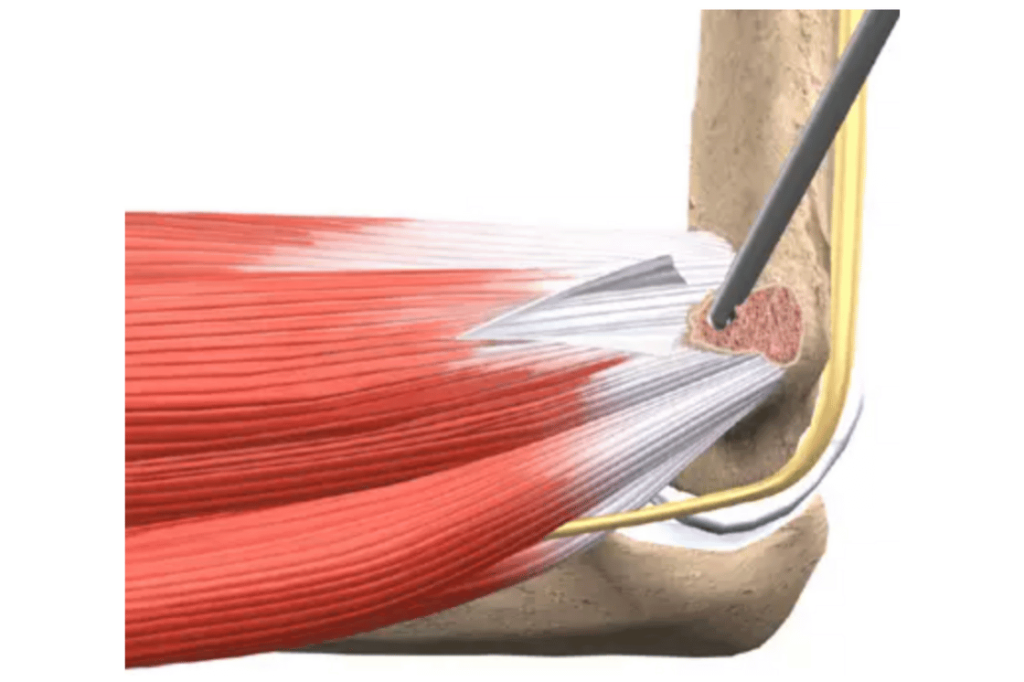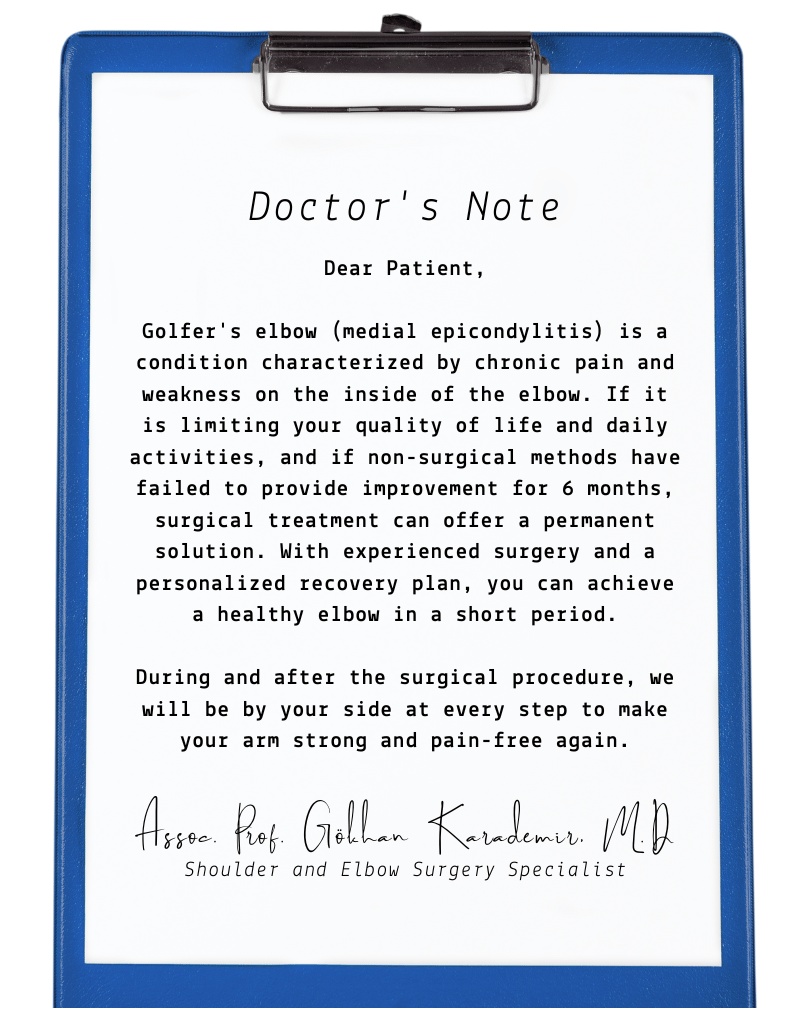Golfer’s elbow, known medically as medial epicondylitis, is the degeneration of the muscle tendons located on the inner side of the elbow, typically caused by repetitive strain. Although it gets its name from golfers, this condition can also affect desk workers, homemakers, plumbers, carpenters, tennis players, and anyone who frequently uses their wrist.

The condition presents with pain, tenderness, and a feeling of tightness on the inner side of the elbow, along with a reduction in the hand’s grip strength. The pain often worsens when bending the wrist downward (known as flexion) and when clenching a fist. While mild symptoms may resolve with rest and simple measures, they can become persistent over time and significantly impact the patient’s quality of life.
In the initial stages, golfer’s elbow is typically treated with non-surgical methods, including rest, medication, steroid injections, PRP (Platelet-Rich Plasma), and physical therapy. Surgical treatment is considered for severe cases that persist for more than 6 months despite these conservative treatments and significantly impact the patient’s quality of life.
Surgical treatment can be performed using either an open technique or an arthroscopic (minimally invasive keyhole surgery) method. During the operation, the damaged tendon tissue is removed (debrided), re-anchored to the bone if necessary, and any pressure on surrounding nerves is relieved. Following surgery, a carefully planned recovery and exercise program helps most patients regain a strong, pain-free elbow.

Operation Duration: 30–45 minutes
Type of Anesthesia: Nerve block (regional) or general anesthesia
Surgical Method: Can be performed using an open or arthroscopic (minimally invasive) method
First day: 2–4
First week: 2–3
After 2 weeks: 1
Usually, patients are discharged the same day, or a 1-night hospital stay may be required.
First 1–2 weeks: Arm is rested; a light bandage may be applied
From the 2nd week: Light hand and wrist exercises
4th–6th week: Active arm movements and grip-strengthening exercises
6th–8th week: Return to daily activities
3rd month: Return to sports and strenuous arm/hand use
First dressing change: Day 2
Wound check: Week 1
Suture removal (if necessary): Day 10
No. Most cases resolve without surgery. However, surgery is recommended for persistent cases that are resistant to other treatments.
Both methods are safe and effective. The arthroscopic method may leave a smaller scar, while the open method can allow for a more direct repair. The decision is made together with the patient, based on their specific condition.
Yes. Grip strength and arm muscles are largely restored through the physical therapy process.
With the correct surgical technique and proper rehabilitation, the recurrence rate is very low.
Exercises are generally sufficient to regain muscle strength and maintain the range of motion.